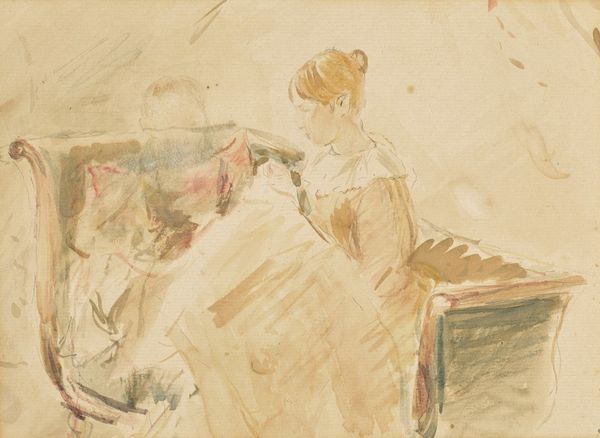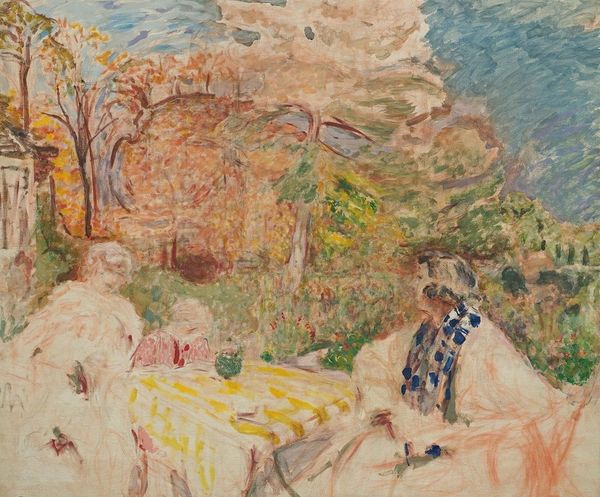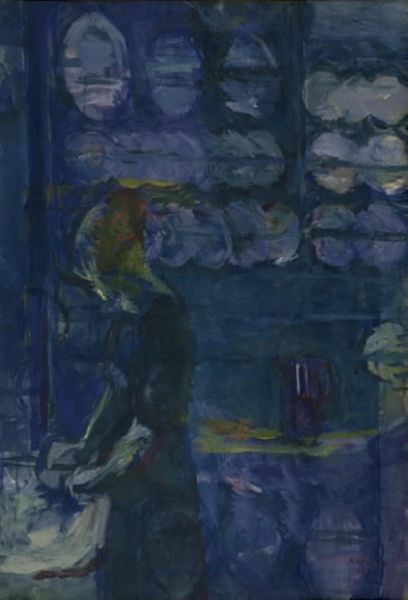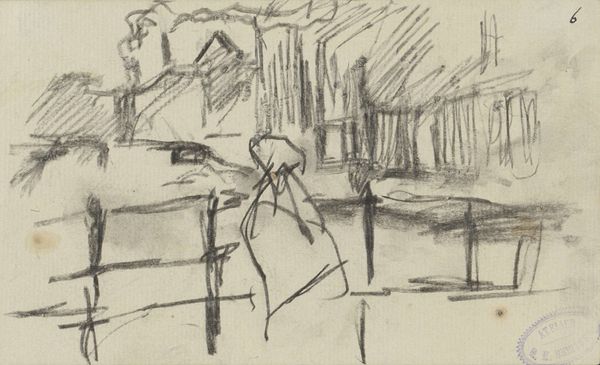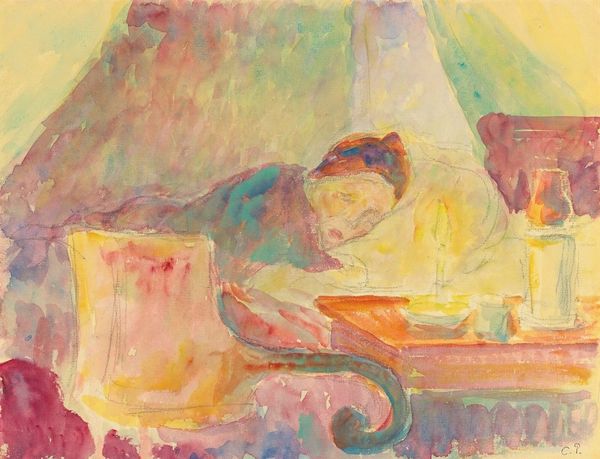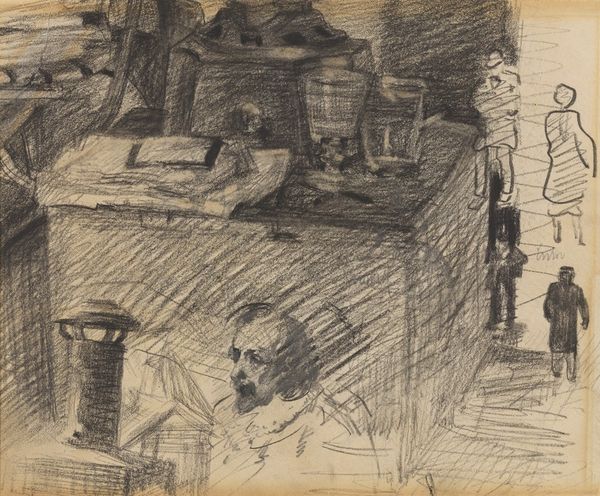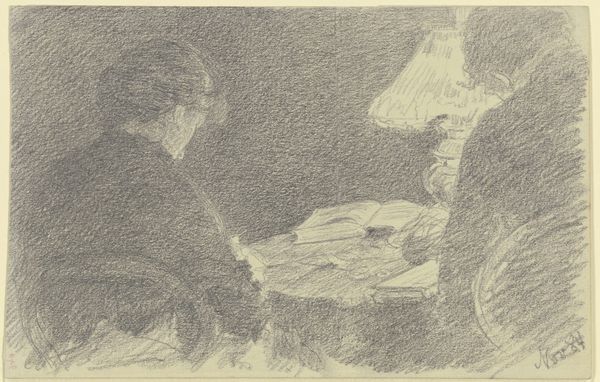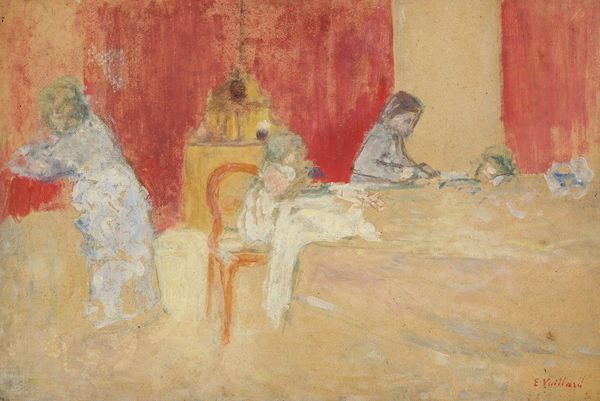
Copyright: Public Domain: Artvee
Curator: Welcome. We’re looking at Edvard Munch’s "Restaurantscene," a pastel drawing from 1892. Editor: A sigh in pastel. That's my first impression. The colors feel muted, exhausted almost, like the end of a very long day, or a conversation that has gone on too long. Curator: The work is part of a series of sketches and studies Munch made in preparation for his paintings. It reveals a lot about his working process, moving between social observation and intimate psychological space. You can see the individual strokes, the build-up of the pastel on the paper. Editor: Exactly. It's so raw. I'm particularly drawn to the way the light seems to leak from the figures. They’re barely there. It captures this sort of fleeting, melancholic moment...as if Munch just glimpsed something essential about human isolation, that bubble around everyone, even in a crowded space. Curator: And yet, notice how deliberately Munch positions the figures in relation to the tables, bottles, and windows. The scene evokes the feeling of Parisian nightlife, and also comments on the alienating experience of modernity, and on bourgeois social spaces as performance. It hints at broader changes in leisure and class dynamics. Editor: Bourgeois, maybe, but something profoundly human happening within it. You've got these swirls of pastel almost burying everyone, blurring faces, leaving just a wisp of someone’s form and loneliness behind. Curator: Absolutely. By breaking down the traditional notions of genre painting and the very art-making process itself, Munch allowed this exploration of internal states of being into the finished piece. The medium is not just the messenger; the medium *is* the message here. Editor: So, it's all in that anxious touch then. You are right. This picture isn't about representing an outside scene; it’s about revealing how that scene hits the raw nerve within us, how social experience grates. Beautiful. Curator: It demonstrates how carefully orchestrated images reflect anxieties around class, gender, and the burgeoning culture of consumerism during the turn of the century. Thanks for lending me your perception. Editor: It was like looking into a mirror, almost uncomfortably so. I saw reflected some collective longing and isolation. I wish more artwork could touch me like that!
Comments
No comments
Be the first to comment and join the conversation on the ultimate creative platform.
